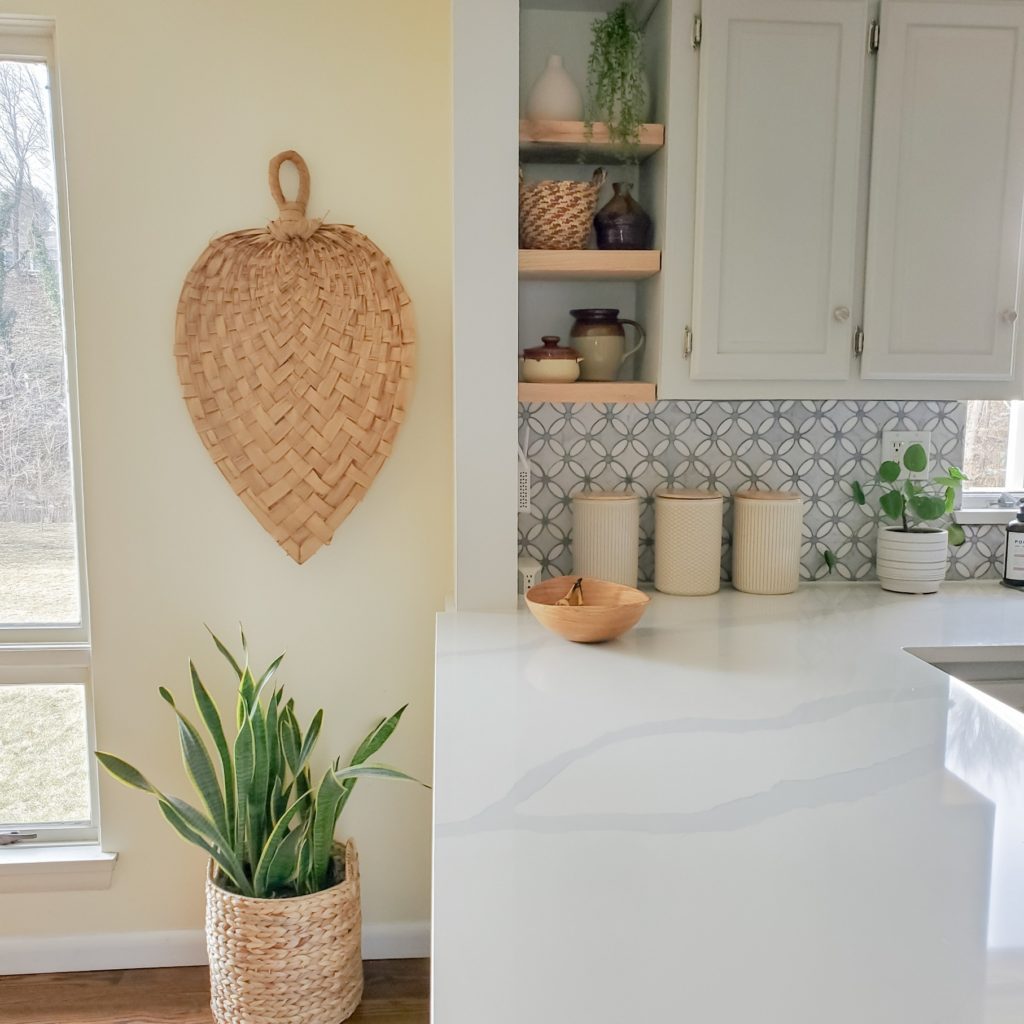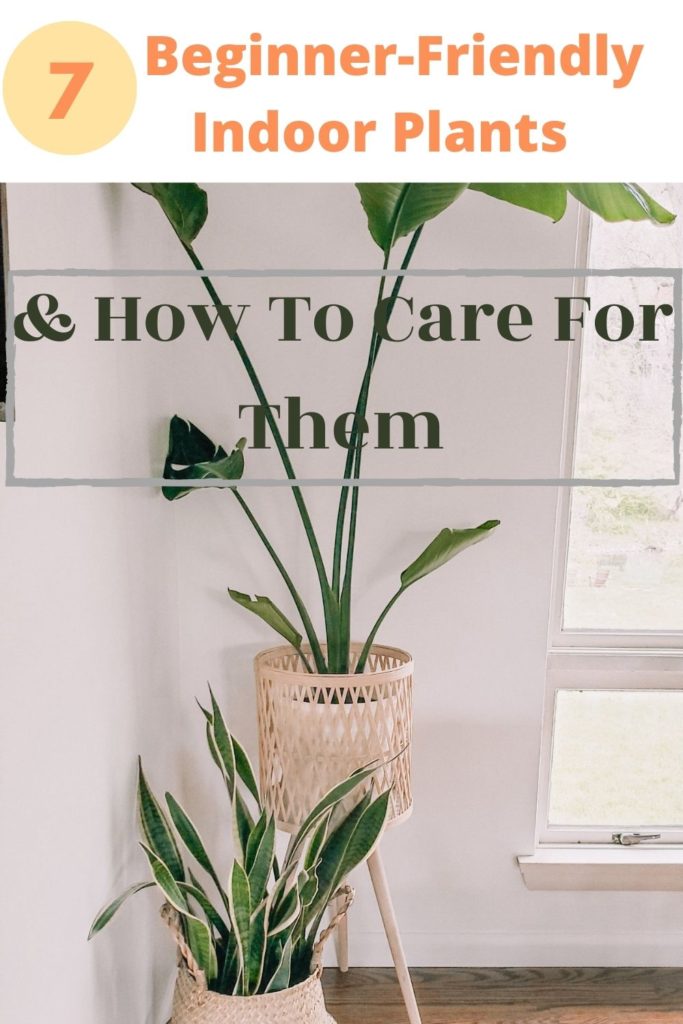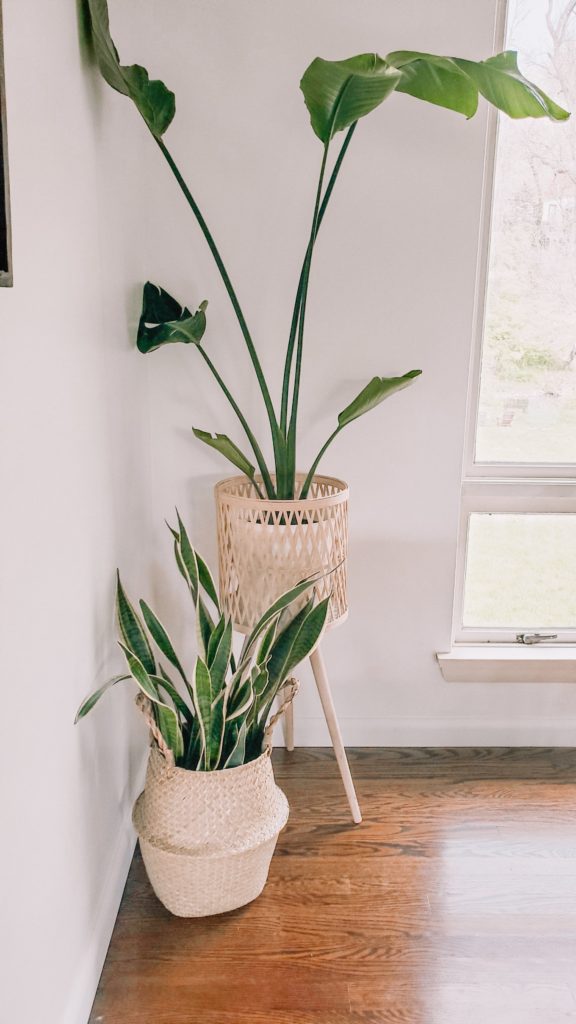Do you want to add indoor plants to your home but doesn’t have a green thumb? In this post, I will be sharing the best and easiest indoor plants and tips on how to keep them alive and healthy.
Let’s talk about indoor plants, shall we? If you’ve been following along, you know that I have an obsession with indoor plants. It started when I was young. When I was growing up, my mom had a huge collection of plants (I grew up in the Philippines). She had different varieties of orchids and other tropical plants.
One of my chores was to water the plants twice a day. It gets really hot and dry there in the summer, so we had to water them regularly. It was one of the chores that I enjoy, aside from decorating the house. I remember taking different potted plants indoors in the living room and in the bathroom.

My mom is the big reason why I developed a love for plants. Today, I have about 15 indoor plants and counting. I have plants in almost every corner of our home. I am lucky that hubby loves plants too.
There’s something about greenery that livens up a space. I am currently obsessed with white, wood, and green for greenery 🙂 You can’t go wrong with plants. To me, it doesn’t matter what kind it is as long as it’s healthy.
Today, I am going to share my favorite indoor plants and how to take care of them.
This page includes affiliate links – full disclosure.
ZZ Plant or Zanzibar Gem

Also known as Zamioculcas zamiifolia. This tropical plant loves bright to low indirect light. I love the shiny oval-shaped leaves and make a great addition to any space. This is a low-maintenance, easy-to-care-for indoor plant that is perfect for beginners. Just like any other plant, I wipe the dust off the leaves occasionally to keep them healthy.
ZZ plant is drought-tolerant so I make sure it’s completely dry before watering it. It is better to underwater your ZZ plant than overwater it.
Snake Plant

This is one of the easiest and most popular indoor plants. If you are looking for a beginner plant, the snake plant is for you! Snake plants thrive in bright and low-lights. Its slender and upright leaves make it ideal for small spaces.
In warm climates (zone 9-11), they can be grown outdoors and can adapt to full sun. Snake plants are slow-growers and rarely need repotting if growing indoors. They prefer a well-drained potting mix. Water only when the soil is dry to the touch. Snake plant comes in many varieties.
Pilea Plant

One of my favorite plants is pilea. I love its round, big leaves. This plant is not easy to find (Lowe’s, Home Depot, and Walmart doesn’t carry this plant). That’s why when I saw it at our local grocery store, I knew I had to take it home. Pilea plant prefers bright-indirect light. They don’t do well in low-light. I put it on the hearth last year and the leaves started to drop. I decided to move it to my windowsill and it’s been doing well.
Pilea plants need to be watered frequently. I water it 3-4 times a week when the top is dry to the touch. They prefer a well-drained potting mix. Root rot is one of the most common issues of indoor plants. Rotate the plant from time to time to ensure all of the sides get proper growth.
Pothos Plant

If you are looking for vine or climbing indoor plants that are easy to maintain, this plant is for you. It requires bright-indirect light but can also tolerate a medium to low-light environment. Make sure you use well-drained soil because they do not like to sit in wet soil. Before you water your plant, place your finger about an inch deep in the soil. If it’s dry, it’s time to water your plant.
If you notice the leaves turning yellow, it might be an indication that you are watering them too much. Pothos plant requires pruning to encourage new growth. This will help your plant to look more lush and healthy. You can use the cuttings to propagate more pothos plants. This plant is one of the easiest indoor plants to propagate.
Birds of paradise

If you love tropical plants but live in a cold climate, birds of paradise is a great choice. I remember seeing them in our yard growing up. The flowers look like birds, hence the name birds of paradise. Because we live in zone 7, I can only grow it indoors. Like any other plant, birds of paradise do not like wet soil. Allow the top two inches of soil to dry out between waterings.
Birds of paradise love bright light. You may take it outdoors in the summer when the temperatures are consistently above 70 degrees. Make sure to bring it indoors when the temperature starts to drop below 60 degrees.
Spider Plant

Spider plant is another type of plant that is easy to grow. Place the plant in a bright to moderate light area. Keep the soil lightly moist in spring and summer but allow the soil to dry a bit in the winter before watering. Spider plant is very easy to propagate. Just cut the young plantlets and plant them in potting soil.
If you notice the leaves turning brown, it may be a signal that you are under or overwatering your plant. You can prevent root rot by using a pot with proper drainage. Or make sure to water it regularly when the soil is dry.
English Ivy

English Ivy tolerates low to medium light. Ivy’s can be trained to create topiaries indoors or outdoors. If you notice the plant is becoming leggy, then it’s time to move it to a bright location. Let the soil dry out slightly before watering.
I have the variegated variety of Ivy and it’s been doing well in a low light area. I put it on the side table in our living room. This is one of the easiest indoor plants I’ve owned.
Takeaway
To keep your indoor plant healthy, check what kind of lighting your plant needs. Next, is to make sure to not overwater your plant. Root rot is a very common problem for indoor plants. Most plants don’t like to sit in water. Good drainage is very important to keep your plants alive and healthy.
I hope this post inspire you to bring greenery to your space. I love houseplants and enjoy caring for them. Indoor plants makes a great addition to your home decor. Do you have a favorite houseplant?
Jennabel
Pin for later:

